There are no roads leading into the Shok Valley. The village, which stands sentinel over the valley, is home to one of the fiercest insurgent forces in Afghanistan-the Hezeb Islami al Gulbadin, or HIG.
On April 6, 2008, a daring raid into the stronghold by Afghan commandos and their special forces counterparts, tested the mettle of the Afghan forces and further forged the bond between them and their SF brothers.
In December 2008, Lt. Gen. John F. Mullholland, commander of the U.S. Army Special Operations Command, pinned Silver Stars on the chests of 10 of the men involved in the raid and the ensuing six-and-a-half-hour firefight that saw more than 150 insurgents killed. It was the largest ceremony of its kind since the Vietnam era. But for the members of Team 3336, of the 3rd Special Forces Group, it was never about the medals.
When you ask them to use one word to describe April 6, their words pop, much like the gunfire that rained down on them.
"A nightmare."
"Baptism by fire," said Staff Sgt. Daniel Plants, "it was my first firefight."
"Cliffhanger."
More words followed as the team went back in their minds to that day.
The team was assigned to take out high-value targets within the HIG. The insurgent group was entrenched in the valley and was guarded by a number of highly trained foreign fighters. The sheer number of weapons and amount of ammo used by the insurgents led the team to conclude they had been stockpiling the weaponry within the fortress-like village since the Soviet occupation of the country during the 1980s.
A group of Afghan commandos accompanied the team that day. "We have such a big rapport with the commandos we've trained," said Staff Sgt. Luis Morales, the team's intelligence sergeant. "They have such a loyalty to us. They try as hard to protect us as we try to protect ourselves."
"We eat, sleep and train with these commandos," said Capt. Kyle Walton, the detachment commander. "We die with them, too. These guys are close friends to us. At the outset of the attack, I lost my interpreter, and we were as close as anyone."
The interpreters hold a special place within the team. "They are just like a member of the team," said Morales. "One of our interpreters has seen as much combat as any of us. He has six years of combat experience. He's been with six SF teams and been in hundreds of firefights-but he doesn't get the six-month break.
"With our tactical knowledge and (the commandos') knowledge of the local populace, terrain and customs, we can truly become a force multiplier," said Walton. "That's what SF does. We bring things to the fight that they don't have, such as close air support and weaponry. But in the end, it's an Afghan fight, and we are part of it."
The commandos who accompanied the SF team on the mission have developed something of a reputation throughout Afghanistan. "The Taliban calls them the wolves. When they hear the wolves are coming, they know they are in trouble. The commandos are pretty feared. Everywhere we go, they identify us with the commandos, and the fact that this group of insurgents was prepared to sit and fight us to the death was indicative of an enemy force you don't see every day," said Morales.
"Eighty percent of the guys on the ground that day had been in firefights before," said Walton. "We feel fairly comfortable in a firefight anytime."
But that day was different. The team was going into the unknown. The Soviets, during their occupation of the country, never made it into the Shok Valley. To date, no coalition troops have been there. This was a first. To get into the valley, the team had to fly.
"I feel comfortable with my feet on a ground," said Morales. "I don't feel comfortable in the helicopter-we can't control what happens there. But on the ground, we have a plan, we go in and do it, and the rest falls into place."
"We knew this was going to be a difficult mission. We expected there to be a number of insurgents because of the high-value targets we were after, but we really thought the terrain would be the greatest difficulty," explained Walton.
That thought proved correct. As the helicopters settled over the valley, the pilots couldn't set the birds down, so the soldiers had to jump about 10 feet off the bird. Many of them landed waist-deep in an icy river. With temperatures in the low 30s, the climate immediately began to take its toll. Then they faced a climb up the mountain.
Walton explained the idea was to go into the village unannounced, with the plan to take the fight to the insurgents in the village. "We didn't want to fight uphill," he said, adding that the village is at an altitude of 10,000 feet.
The team decided to use switchbacks, which were actually terraced farm plots, as a means to get up to the village. The team was divided into three maneuver units, with members of the SF team paired up with about six commandos and their interpreters. The village itself is situated on a finger off the mountain. The team would have to head up a draw to the village.
"The buildings in the village are built one on top of the other on top of a slope thousands of feet in the air," said Walton. "So we started the climb. The insurgents waited until the lead element was within a couple hundred meters of the compound before they initiated contact. As soon as the shooting started, we realized that they had their defensive positions dug in, and they were occupying buildings 360 degrees all around us."
As soon as the opening salvo was fired, the interpreter standing beside Walton in the command-and-control element was killed. Moments later, Staff Sgt. Dillon Behr was shot in the leg. Behr, a communications sergeant, stayed in the fight and sustained another wound before he became unable to continue the fight.
"We knew we needed to regain the initiative, so we started initiating danger-close air runs," said Walton.
Staff Sgt. David Sanders was in the lead assault force. "I had approximately 10 commandos with me, and we got into the village before we started receiving fire. We couldn't move any farther forward," he recalled. "Through the radio traffic, we heard some of the team had gotten shot, so we started trying to identify the buildings where the fire was coming from. We hoped to neutralize the threat."
Walton said Sanders was the first person he thought of who might be able to identify where the insurgents were. "I was standing next to the combat controller, and when we got to a place where we could talk, he called in close-air support, and the F-15s rolled in immediately. I knew my guys were up there, and I know that when you call in danger-close air, you are probably going to get injured or killed. I called back to Sanders and asked if he was too close. He said, 'Bring it anyway.' Bombs started exploding everywhere. When I called to see if he was still alive, all I could hear him saying was, 'Hit them again.'"
Walton said that it is rare to call in danger-close air even once during a firefight. Throughout the afternoon, the team called it 70 times.
"We did take some casualties from the danger-close air," said Staff Sgt. Seth Howard. "A lot of the commandos got injured from falling debris. The bombs were throwing full trees and boulders at them-they were flying hundreds of meters."
At one point in the battle, when it looked as if the C2 element would be overrun, Sanders called for the bombing to come closer. "They dropped a 2,000-pound bomb right on top of our position," said Walton. "Because of the elevation, the bomb blew upward rather than down. It just didn't seem like we had much of a decision. Our guys were wounded, and we couldn't go back the way we came."
"We knew we might get hurt, but we really didn't think about it," said Sanders.
"The insurgents were so dug in, so well, that even the close-air support wasn't enough. It helped, but it was by no means a magic wand," said Howard. "You would think when the bombs start dropping they would stop shooting at you. That's the thought process, and you know it might kill you or somebody else, but when there are so many pieces of hot metal flying all around you constantly, you've got to let it go."
With bombs falling and heavy gunfire coming from every side, the team returned fire. Team members recall going through masses of ammo, in addition to the bombs that were dropped and the rounds the aircraft were firing.
The team's fire was controlled, though, said Walton. "Cloud cover was coming in, and there was no certainty that we would be able to get out that night. So we didn't waste our ammo. We really didn't fire unless we had a shot or when we needed to lay suppressive fire to allow people to move."
The insurgents, likewise, were shooting in a controlled manner. The gunfire was heavy, sustained and accurate. Team members recall that even if the bullets weren't kicking up beside them or hitting them, they definitely heard them crack near them.
The only break in the battle was when a bomb was dropped on a three-story building. The building exploded outward. "Good guy or bad guy, you're going to stop when you see that," said Morales. "It reminded me of the videos from 9/11-everything starts flushing at you, debris starts falling-and everything gets darker."
"I was totally in the cloud of black smoke. I couldn't see an inch in front of my face," said Howard.
Plants recalled hearing the call for fire and wanting to see where the bomb was going. "I was staring at it and saw the building go up," he said. "I remember looking up, and then all of this stuff starting coming down. All I could do was roll up tight and hug the cliff wall."
The battle started to turn when Howard, a trained sniper, started picking the insurgents off. Howard was not in the lead element, and he had to fight his way up the mountain to come to the aid of his team. The fight was not easy. He and the team of commandos he led up the mountain were under intense insurgent fire. They were getting hit with rocket-propelled grenades, small arms and machine-gun fire. "We knew some of our guys were hurt and that we had to get to them," said Howard.
"We were pinned down," said Walton. "When the fire became so intense, we moved out onto a ledge against the cliff to protect our wounded. What turned the battle was Seth (Howard) and his element."
Howard directed the Afghan commandos to fire on insurgent positions so that he could get into place with his sniper rifle and his recoiless rifle. "They had been hunting us, and now they were getting hunted, too," said Walton. "We had been trying to return fire, but we couldn't find them. They were firing in a very disciplined manner. They were not hanging out windows or running at us."
As Howard and his element engaged the enemy, Walton knew time was running out. Reports from the air said more insurgents were moving in their direction.
Everyone on the team had sustained some sort of injury, four of them critical, and the commandos had their share of injuries, as well. "Everyone kept fighting, but there was a window closing on us," said Walton. "We knew we had to get out."
"Our higher command told us we had to get out of there," said Walton. "The weather conditions were closing in, and the window to be on the ground was rapidly closing. Most of the objective was gone at that point, but our casualties were mounting-we were in a mass-casualty scenario at that point-and they became our priority. We never thought of retreating. That was never an option."
"The weather was a deciding factor," continued Howard. "When the weather rolled in we could be stuck there at least overnight, possibly for days. They couldn't fly in to get us, and we would have been stranded in completely hostile territory. That was not a plan for success, especially with the pilots observing another 200 insurgents moving in on us."
With their backs literally against a wall, and recognizing that they couldn't go down the same way they came up (the switchbacks they had climbed up were the primary focus of the insurgent fire), they began assessing an alternate exit route.
"We knew we couldn't go back the way we came, so our only option was going down the cliff," said Walton.
Had the team been healthy, that would have been a difficult scenario. But with the number of wounded and the fire raining down, it seemed impossible. Walton knew he had to take the chance.
"We were completely pinned down. There was intense fire all around us. We couldn't leave the casualties. We were prepared to sit there and die with them, but we decided we were going to get them out of there," he said.
Sanders made the first climb down the mountain by himself. When he climbed back up the sheer face of the cliff, Walton had one question, "Do you think we can make it down'"
Sanders' reply put the climb in perspective, "Does it matter if they have broken necks or backs'"
"My question was, 'will they live''" said Walton. With Sanders' assurance that they would live, the team began the treacherous climb.
Master Sgt. Scott Ford, the team sergeant, set up the medical evacuation and had the less seriously wounded carry the more critically injured down. While organizing the commandos, Ford was shot in the chest plate by sniper fire. He immediately got to his feet and continued to lay down suppressive fire. One of the insurgent snipers had Ford in his sights, and he shot him in the upper left arm, nearly severing it. With a tourniquet around his arm, Ford climbed down the mountain and continued to organize the medevac.
Morales said that the team made its way down the cliff hanging onto branches and rocks. "Near the bottom of the cliff, most made a 20-foot drop," he said. "I remember seeing John (Walding) carrying his leg down"-Walding's leg had been amputed by sniper fire.
As the wounded made their way down the cliff, Howard, Walton and Spc. Michael Carter, a combat cameraman assigned to the unit, remained behind to lay down suppressive fire and retrieve equipment.
"There were a lot of guns around where everybody had been shot," said Howard. "It kind of became an issue that there were too many guns up there, and we didn't want to leave them in enemy hands."
Carter ran through a hail of fire to retrieve guns and other equipment. His own cameras had been shot up during the initial hours of the battle. He gathered equipment and began throwing it off the cliff, while Howard continued to pick off enemy combatants.
"The stars really aligned," said Walton. "Bullets were coming down from the side and behind us, and we could hear guys yelling above us. An element that came to reinforce the team that was on the ground stepped out into the open and started firing and gave us the chance to get out. Seth was crazy enough to stay up there and cover us while we made the climb down."
Alone, with less than a magazine of ammunition left, Howard covered his team as they made their way down, and only after they were safe, did he leave the mountain.
"We didn't go into this mission hoping to make history. For us, it was just a regular mission-just like the one we had done the week before. Our goal is never to get into a fight. We'd rather sit down and drink some chai," said Walton. "We were hoping this mission would be the same, but we got into a big fight, and some of us got hit while trying to save each other. That's what we do.
"We think we sent a pretty big message to the insurgents. We let them know that we could penetrate their comfort zone. We told them there's nowhere you are safe that we aren't willing to come in and go after you," concluded Walton.
Janice Burton works for the U.S. Army John F. Kennedy Special Warfare Center and School.
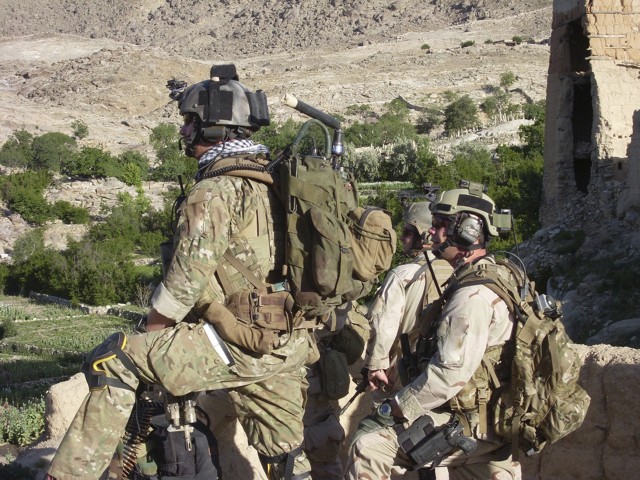
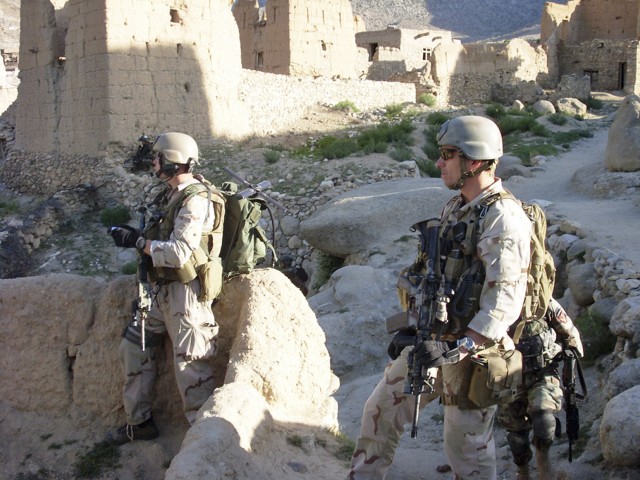
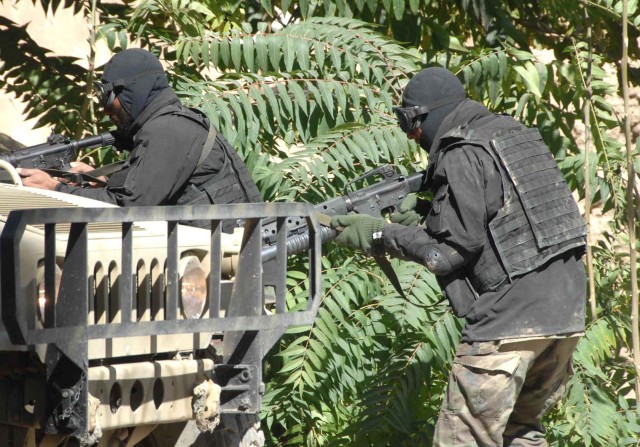
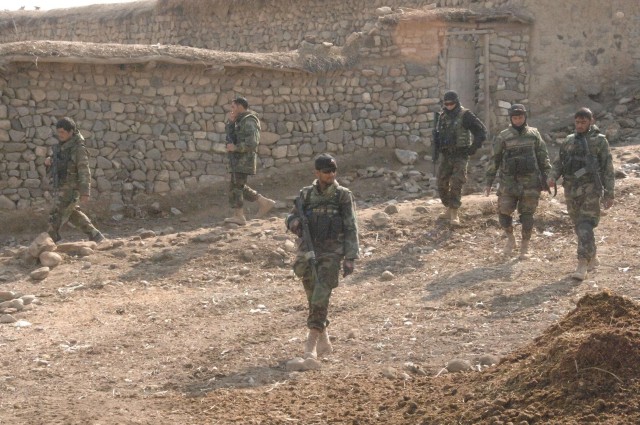
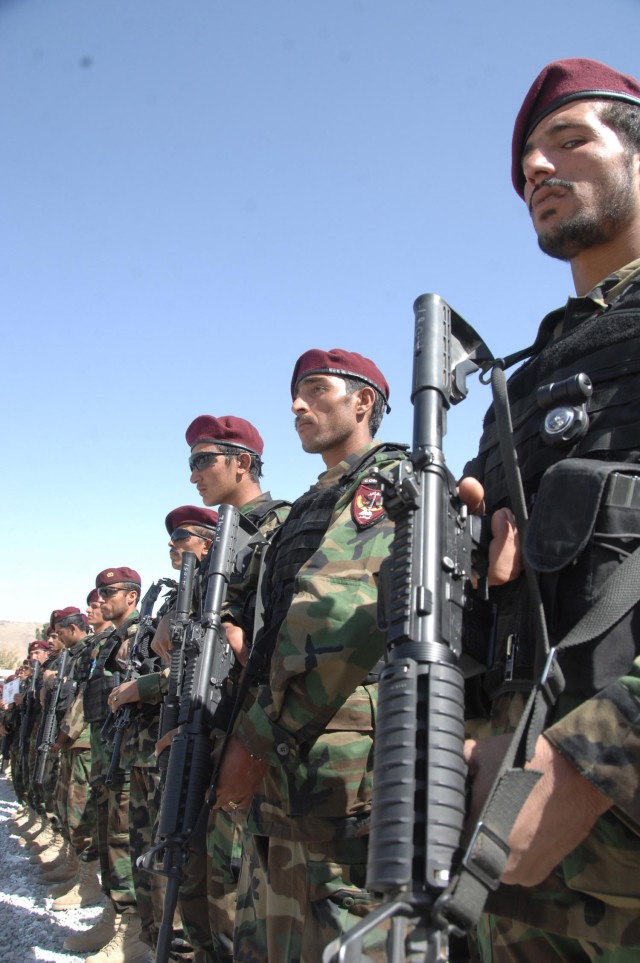
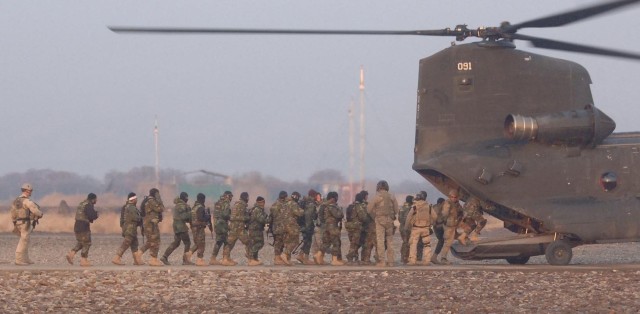
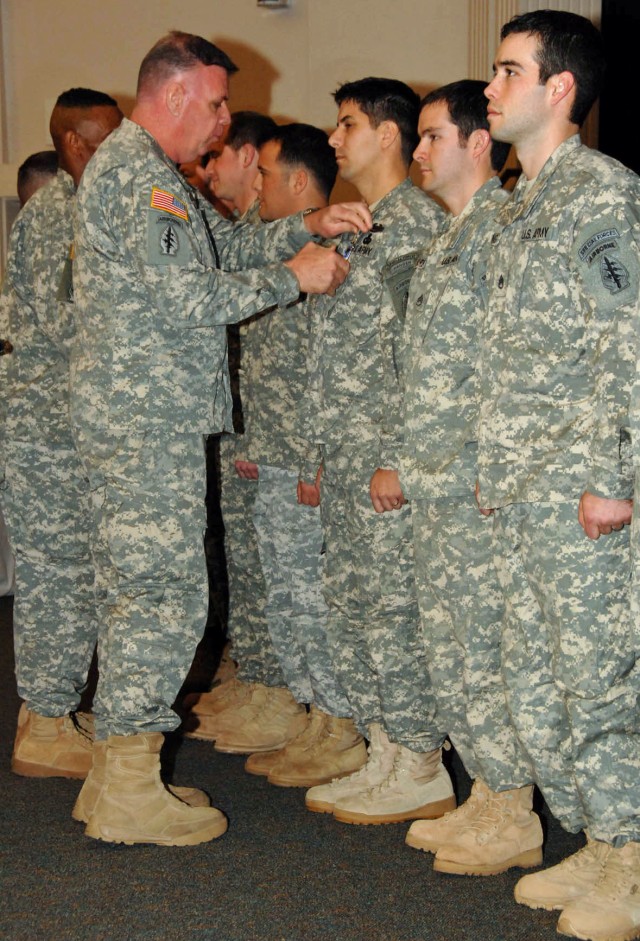







Social Sharing